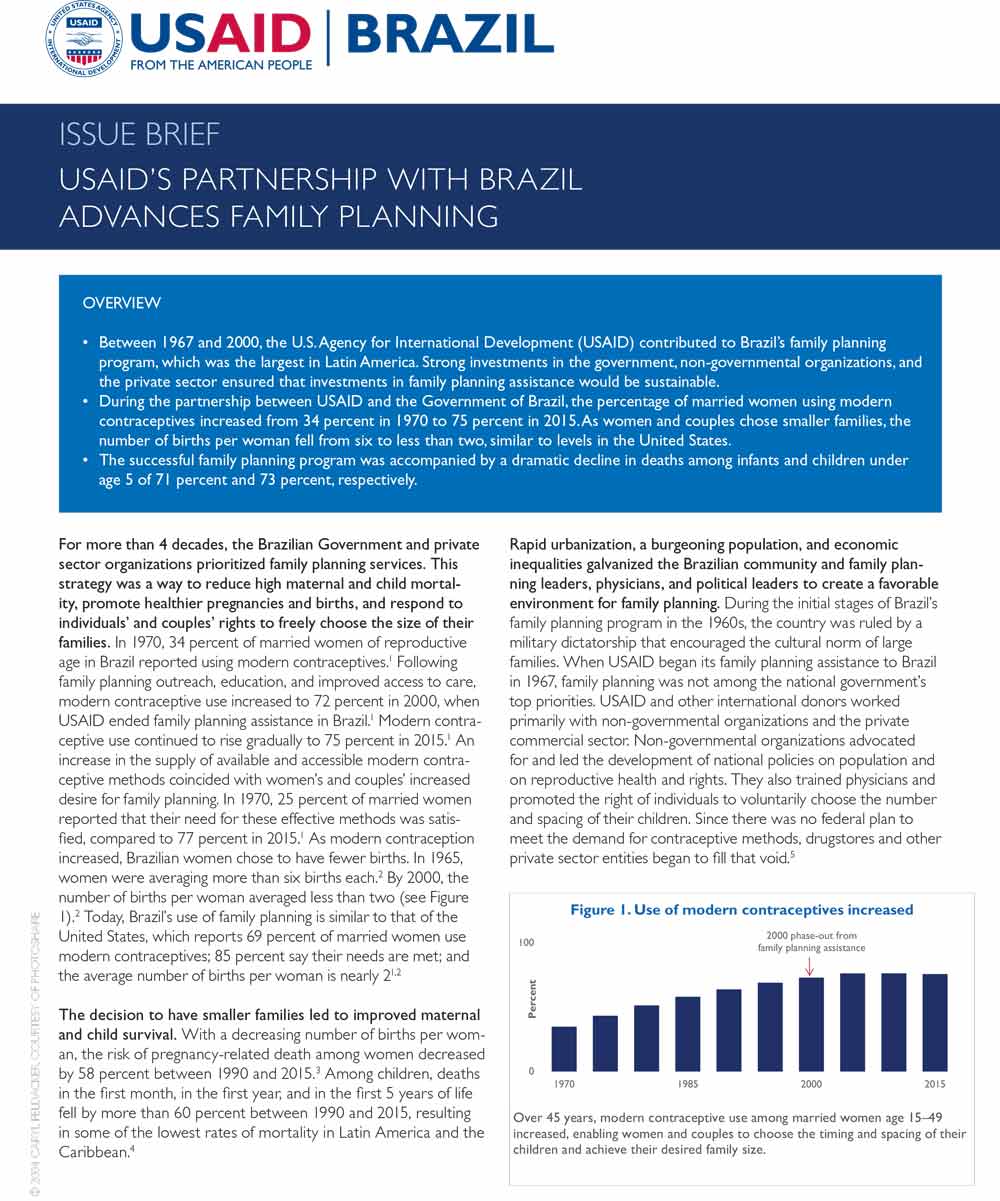Home » What We Do » Global Health » Family Planning » Resources » USAID's Partnership with Brazil Advances Family Planning
- What We Do
- Agriculture and Food Security
- Democracy, Human Rights and Governance
- Economic Growth and Trade
- Education
- Ending Extreme Poverty
- Environment and Global Climate Change
- Gender Equality and Women's Empowerment
- Global Health
- Water and Sanitation
- Working in Crises and Conflict
- U.S. Global Development Lab
For decades, the Brazilian Government and private sector organizations prioritized family planning services. This strategy was a way to reduce high maternal and child mortality, promote healthier pregnancies and births, and respond to individuals’ and couples’ rights to freely choose their family size.
Overview
- Between 1967 and 2000, the U.S. Agency for International Development (USAID) contributed to Brazil’s family planning program, which was the largest in Latin America. Strong investments in the government, non-governmental organizations, and the private sector ensured that investments in family planning assistance would be sustainable.
- During the partnership between USAID and the Government of Brazil, the percentage of married women using modern contraceptives increased from 34 percent in 1970 to 75 percent in 2015. As women and couples chose smaller families, the number of births per woman fell from 6 to less than 2, similar to levels in the United States.
- The successful family planning program was accompanied by a dramatic decline in deaths among infants and children under age 5 of 71 percent and 73 percent, respectively, from 1990 to 2015.








Comment
Make a general inquiry or suggest an improvement.